|

TTT
soundtrack: Sindarin and Old English lyrics
[December
12, 2002,
Updated on January 4, 2003]
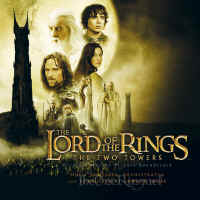
December
10, 2002 was the official release date of Howard Shore's score for The
Two Towers. There are three
versions of the soundtrack: Standard
Jewel Case Edition, Limited
Edition and Internet Limited
Edition. The first edition has only three lyrics in its
booklet: The Ents (Sindarin), Gollum's
Song (English) and The
Missing (Old English). Two of them have been analyzed in our Soundtrack
Department.
The
Limited Edition package contains
"lyrics and poems": we hope it covers the rest of the lyrics
sung in Quenya, Sindarin, Adûnaic and Old
English which can be heard in TTT score.
Update!
Karyn Traphagen sent to
G-i-P few poems and lyrics found on the
Limited Edition website. They can be found
here. I also received a
necessary help from Iris, who has found fragments of the lyrics in the
soundtrack.
If you are in possession of other lyrics
and poems from TTT soundtrack send
them to Gwaith-i-Phethdain! They will be analyzed here in detail. Your
help is wanted!

|
|

Mysteries
of movie Dwarvish revealed!
[December
1, 2002]
David
Salo in Elfling message
from November 30, 2002 presented background and meaning of the Moria
inscriptions prepared by himself for the LotR trilogy: "In
May of 1999, I was asked to provide some translations and renditions
into a mode of Angerthas for the runic lettering that would
appear on the walls of Moria. I worked with John Howe and Grant Major
on this; Grant wrote the texts he wanted rendered into Khuzdul (to be
accurate: part Khuzdul, and part my own inventions), and I faxed back
transcriptions into cirth. It was a few days' work, and then of
course the inscriptions had to be turned into actual artifacts that
would give the flavor of the Dwarvish civilization in Moria."
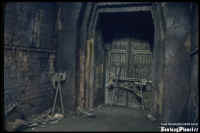
David
Salo's Khuzdul phrases and inscriptions can be seen here.
David writes in his Elfling message: "I should add that my construction
of neo-Khuzdul (or pseudo-Khuzdul, if you prefer) changed over time, and that
the constructions I used in the soundtrack differed in some particulars; in
particular, I elaborated the verbal system a good deal more and in some
different ways than the examples above suggest."
We
all hope David Salo will describe his neo-Khuzdul one day on our
website.

|
|
Inane comments written on the walls of Moria: true of false?
[December 1, 2002]
Listening the commentary sound-track
from the design crew on the extended edition of FotR DVD we can hear
unusual history about the inane runic inscriptions on the walls of
Moria (Disc II, scene 35 "Balin's Tomb"), just after the entrance of
the Fellowship into the Chamber of Mazarbul:
GRANT MAJOR: There's quite a interesting
story attached to all the lettering on the walls here, because we,
well, I personally, actually, wrote the text which was translated into
Dwarvish and then applied onto the walls, and so I was very careful
with the place names and the people's names and what have you, and of
course there is a limited amount of information that I could glean
from the books in terms of the histories here, whatever; I did write
down all the history part of it myself, and as fate would have it,
there was a Tolkien language scholar who was invited onto set; and he
happened to visit this particular Balin's tomb set one day off-shoot,
and he reported to the producer that there was all sorts of inane
comments written on the walls, like, - I can't remember the exact
quote he used, but something like "Joe was here" and various other
irrelevancies.
Finally the crew didn't find any such an
inane inscription and it seems that the "Tolkien language scholar"
(whoever he was) had a false impression about the runic inscriptions
in the movie, but... I have found this strange inscription in
Appendices to extended DVD edition (Disc IV, Big-atures):

The inscription reads: ... and gohn
made. It is English and it should be understood as '[a name]
and John made'. Such an inscription couldn't be made by the Dwarves of
Khazad-dûm. Its author is a John who probably worked in the
decorations team. Maybe the mentioned above "Tolkien language scholar"
saw an inscription like this?
It is clear (especially in light of the
report above) that David Salo (who is the
author of the Moria inscriptions in Khuzdul) is not responsible for
such silly texts on Moria pillars.

|
|
|
Elvish from Extended DVD FOTR analyzed
[November 15, 2002]
On November 12 the new DVD Extended FotR
edition was released. As we wrote two weeks ago,
it contains a lot of new linguistic features. Now you can find all the
dialogs from the extended edition analyzed or partially analyzed
here. The
new Sindarin dialogs are:
-
Anirne
hene... or Elrond Near Gilraen's Grave.
-
Boe ammen...
or Lórien Dialog III
-
Am
meleth dîn... or Galadriel's Farewell
In preparation is a special analysis of
the new Elvish songs occurring in the extended edition as well as a
review of the calligraphy fragments found in the movie. Your help will
be appreciated! R.D.
UPDATE! Thanks to
Míriel's
message on ELFLING I could add to our list the Sindarin text of
the song sang by Viggo Mortensen (Aragorn). Today I present two new
Sindarin texts of songs from DVD Extended FotR:
-
A
Elbereth Gilthoniel
-
Lay of
Leithian

|
|

Easterling
letters! New writing system in the TTT?
[November
3, 2002]

|
Yesterday
Tolkien Online presented a report
from the TTT exhibit in Toronto, Canada. Its author, Elbren
wrote there that he had been able to see very interesting Easterling
armor. Elbren
wrote: I really don't know if we'll notice the detail of this armor
in the movie, but almost every piece of armor has some sort of
script on it that looks like a cross between Arabic and
Elvish lettering.
If
this is true we can expect a new kind of movie language team activity:
devising quite new system of writing for the movie! I hope we will soon
see it.
|
Easterling
language and script is not described in J.R.R. Tolkien's writings. It
seems WETA and Peter Jackson wanted Easterling linguistic devices to
make their weapon more realistic. Maybe Bill Welden or David Salo could
say something more about this?
UPDATE!
In Brian Sibley's album The Lord of the Rings - The Making of the Movie
Trilogy I have found an inscription which seems to be in the script
mentioned above. I think it is the first published inscription in Easterling
script devised especially for The Two Towers and The Return of the
King films. Here it is:

It
really looks like "a cross between Arabic and Elvish lettering". We
can only guess what it means in the intention of its creators.

Visiting
the tomb of Aragorn's mother
[November
1, 2002 - All Saints' Day]
|
Florian
"Lothenon" Dombach from Germany sent us this very
interesting photo from the extended DVD version of
FotR (see here).
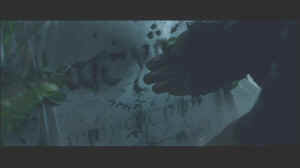
It
seems to be the tombstone of Gilraen, Aragorn's mother, visited by her
son (a theme very actual today, on All Saints' Day) and this is what
Florian could decipher:
Gilraen
Onen
i estel edain
ú-chebin
estel anim
It
is quite obvious that this Sindarin text comes from the well known linnod
from Appendix A in The Return of the King: Onen i-Estel Edain,
ú-chebin estel anim 'I gave Hope to the Dúnedain, I have kept no
hope for myself.' These were the last words Aragorn heard from his
mother.
It
is remarkable that the diphthongs are written full with carriers and the
variable S-Tengwa is used as Christopher Tolkien often did (a in
most full-modes).
For
detailed analysis see here.
|

FOTR
Extended DVD Linguistic Review
[October
31, 2002]
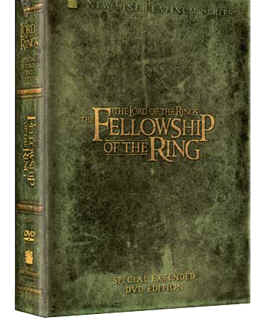 |
In
few weeks all of us will be able to see the DVD extended FotR version with
special Peter Jackson's cut. Here
you can read leo's review of
this 4-disc-set. Spoilers!
Tolkienian
linguists and lovers of the movie Elvish may find it interesting that
the DVD version will contain many David Salo's phrases in the languages
of J.R.R. Tolkien, which were not included in the theatrical version of
FotR.
In
the extended film Frodo and Sam meet Elves passing from Middle-earth to
Gray Havens. Elves sing in Elvish! As
the Hobbits and Aragorn rest after passing the Midgewater Marshes, Frodo
overhears Strider sadly singing a song in Elvish (in Sindarin?)
When asked whom he was singing about, the Ranger responds that it was
the Lay of Leithian. During
the Council of Elrond, Gandalf utters the Ring Verse in Black
Speech (see here) The Rivendel-sequence
ends with Elrond giving his blessing over
the Fellowship. He probably uses the Quenya phrase analyzed
here.
|
|
We
will hear Sindarin in the scene with Aragorn and Elrond near
Aragorn's mother grave.
Also we will see extended scenes in which Haldir
and Aragorn discuss in Sindarin in Lórien; they can be found
here.
In the same scene Gimli curses at Haldir in Khuzdul (this curse can
be found here). During
the farewell scene in Lórien there is more time for Aragorn's goodbye to
Galadriel and some more Elvish lines are being spoken. This can be
a new, earlier not revealed dialog in Quenya or Sindarin.
As
soon as the extended version will be available, you can expect Gwaith-i-Phethdain:
Movie will publish the detailed analysis of all the linguistic
features found there!
|
|

|

FOTR
Extended DVD Menu Inscriptions
[October
31, 2002]
From Andrew
Durdin:
|
TheOneRing.net
has just posted a link to an article
on ign.com which shows images from the menus on the Fellowship of
the Ring extended edition DVD. On a couple of these images, there
are inscriptions in the Certar running along the top of the page
(the menus are designed to look like a book), and in the Tengwar
along the bottom of the page, in imitation of the Lord of the Rings
title pages.



In
the third
image, which shows a tilted title page, the runes along the top are
meant to say There and Back Again - a Hobbit's Tale, while the
letters along the bottom read Eleventy-one years is far too short a
time to live among such excelleng and admirable hobbits. I don't know
half -- and there they stops. In the sixteenth
image, showing a similar title page which is now straight, the runes
along the top are the same, but the writing along the bottom now reads Nine
Companions to match the Nine Ringwraiths. So be it - Elrond regards them
- You shall be the Fellowship of the Ring!. Most
exciting of all - in my opinion - is the fourteenth
image showing a book with a loose leaf resting on its left page;
this is almost a facsimile copy of the calligraphy Tolkien himself did
for The Road Goes Ever On - that's right, it is Namárië,
in the original Quenya! There are a few other bits of tengwar writing
scattered around, but they seem to be fragmentary, and are small and not
clear, so I didn't attempt to decipher them.
The
title page inscriptions, while beautifully lettered, are not very well
executed technically, or rather linguistically. The runes are encumbered
by maintaining the silent final 'e' from English orthography, using
certa 55 (in full, no less) which Tolkien consistently used for schwa,
and there is no attempt at a phonetic spelling such as Tolkien used on
the title page of the book. Even the word "back" is spelled
with a double-k (certa 18).
The
tengwar inscriptions are even worse: the choice of letters is remarkably
inconsistent (vide the use of both tengwar 14 and 22 for 'v',
and 22 (again) and 36 for 'w'), and once again there seems to be little
effort at phonetic spelling, but rather a simple substitution for Latin
characters. They incorrectly use no. 3 for 'c' in companions,
and no. 12 for 'ch' in match (though it should be as in Bach).
The inconsistencies also include spelling nine with 17, dot
above, 17 dot below (for the silent 'e'), but time by 1, dot
above, 18 (without the dot below). But the dot below is retained in live.
For 'h' they use no. 33 (correctly), or 15 (incorrectly -- it should be
'zh' as in azure), but they make 33 do double work for 'x'.
I am
a little disappointed. I would have thought that since New Line put
so much effort into the visual appearance of the DVD menus, they could
have paid a little more attention to using the Elvish scripts in a more
consistent fashion. |
|

|

New
details of the weapon inscriptions
[August
31, 2002]
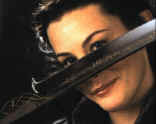 |
Thanks
to our movie informer we can show you new
details and new contents of the sword, knife and spear inscriptions
from the movie trilogy. All photos and information come from The
Official Movie Magazine.
The
most interesting item is the Dwarvish spear inscription
from the weapon of the Cave Troll in the battle of Durin's Tomb!
|

Black
Speech and Rohirric in TTT
[August
28, 2002]
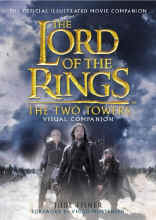 |
In
October 2002 they will publish Jude Fisher's The
Two Towers - Visual Companion. A fully illustrated visual guide to
the second in the Lord of the Rings movie trilogy, taking the reader on
a journey into the world of Peter Jackson's epic.
The
book will contain two phrases in the languages of J.R.R. Tolkien's
Middle-earth: one in Black Speech
and one in Rohirric (which in fact
is Anglo-Saxon). Gwaith-i-Phathdain has analyzed these linguistic items
from the upcoming movie. See here.
|

The
Art of The Fellowship of the Ring
[July
24, 2002]
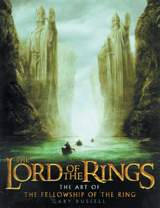 |
New
book entitled The Lord of the Rings: The Art of The Fellowship of the
Ring (by Gary Russel; HarperCollins, 2002, HB, 192 pp., 25 GBP or 35
USD) provides us with few interesting linguistic informations.
We
can find there projects of Aragorn's sword Narsil with simplified Elvish
inscription (see here), we
may also see there the sketch of Aragorn's Hunting Knife with tengwar
letters (see here) and the
traces of tengwar from Legolas' quiver being a gift from Galadriel (it
is worth of further research)
It
would be wonderful if New Line Cinema published a book devoted to the
languages of Middle-earth used in the movie. Maybe it isn't too bad
idea, Dear Publishers!
|

|










